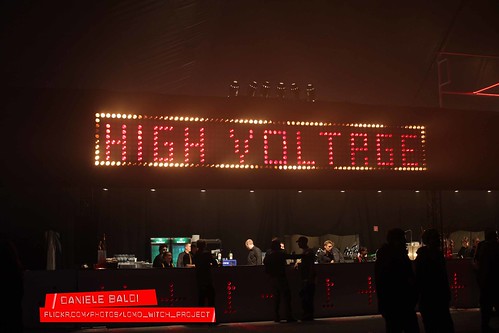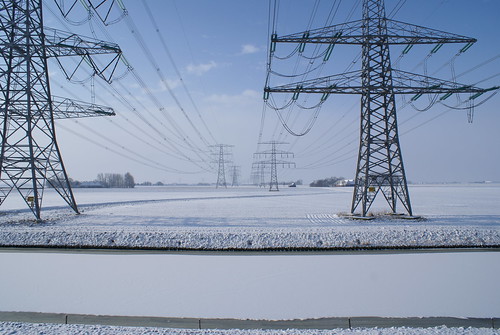Introduction
Today, spas are becoming more and more popular. They can be found at fitness centers, resorts, hotels and in healthcare centers. In fact, they are becoming so affordable that many population enjoy them in the privacy of their own homes. The warm water relieves aches, pains, stress and provides for a wonderfully relaxing experience. However, there has been some negativity with regard to the cleanliness of spas and the spread of illness. population should not be discouraged from enjoying a spa; a properly maintained spa will not pose any health problems to bathers. Using ozone in spa water rehabilitation is a great step towards achieving clean and salutary water. This report will discuss spa water rehabilitation and how ozone is the key to achieving clean water. Finally, there will be a brief discussion on how ozone generators are installed on a spa.
Water sanitation

Proper water sanitation involves three prominent factors: disinfection, oxidation and a residual.
o Disinfection is the killing of viruses and bacteria on contact.
o Oxidation is the breakdown or altering of non-living bather wastes such as organic compounds (greases and oils) from sources such as suntan lotions, body oils and nitrogen containing compounds or amines found in perspiration and urine.
o The residual is the free available disinfectant always gift in the water to ensure that disinfection is being carried out at all times.
Water sanitation
In order to have the best water capability and maximize the bathers' enjoyment of the spa, all three water sanitation requirements should be met through a composition of water chemicals and/or treatments.
Uniqueness of spas
Before any rehabilitation or a composition of treatments can be established, one must realize that treating spa water is very different from treating the water of a typical swimming pool. The following factors must be given extra notice when treating spa water: high water temperature and small volume of water. Spa water is typically maintained in the middle of 96-104°F. Chemical reactions take place at a much faster rate at these temperatures than in cooler swimming pool water. For approximately every 20° growth in temperature, the rate of these reactions is doubled. Hot water temperature and aeration also cause the water to evaporate quickly. As it does so, the total dissolves solids (Tds), such as any minerals and salts, as well as organics and bather waste that have been dissolved in the water are left behind in the spa. High levels of Tds can decrease the effectiveness of some chemical treatments. High water temperature also causes bathers to sweat. Sweat contains body oils, salts, urea and uric acid. It has been approximated that an median bather can sweat as much as a pint in just 20 minutes and, therefore, approximately 40 percent more bather waste is released into the spa than into a pool. The operation of the jets also quickly scrubs off dead skin cells and dirt. Thus a spa has a much heavier organic load in the water than a pool. A good oxidizer is needed to effectively take off such a high content of non-living bather waste.
In addition, the higher water temperature and fullness of non-living bather waste can be a perfect breeding ground for bacteria. Bacteria use non-living bather waste as a source of nutrients. Bacteria occasionally of concern in spas include: Pseudomonas aeruginosa, Mycobacterium avium and Legionella pneumophila, to name a few. P. Aeruginosa can infect hair follicles. Symptoms comprise an itchy, bumpy rash on legs, arms and torso. M. Avium and L. Pneumophila can infect bathers from the aerosol created by the jets. M. Avium causes flulike symptoms and fatigue, while L. Pneumophila is implicated in Legionnaire's disease. When a Filter aids proper level of disinfectant is maintained in the water to kill disease causing bacteria, fungi and molds, the nearnessy of these microorganisms is absolutely controlled and a spa can be very safe for bathers. Bathers should never become complacent or stop caring for the water,or not be as vigilant about the levels of desinfectant in the water. Another factor to think in the rehabilitation of spa water is the small volume of water which creates a heavier bather load compared to that of a swimming pool. Swimming pools typically have at least ten times the estimate of water per swimmer compared to a spa.The heavier bather load of a spa can quickly deplete the sanitizer levels. Care must be taken to enunciate a proper level of sanitizer at all times given this high depletion rate.
Spa water disinfection
The proper disinfectants for spa water are whether chlorine or bromine.These are the only chemicals that have been approved as stand alone disinfectants. These chemicals have the capability to kill viruses and bacteria very quickly.Chlorine and bromine also contribute residual protection, making sure that viruses and bacteria are being killed at all times. In fact, residual is legislated and must be chlorine or bromine.The two most suitable chlorine compounds for use in spas are lithium hypochlorite and sodium dichlorostriaznetrione or Dichlor granules. Sodium hypochlorite and/or calcium hypochlorite can be used; however, they can facilitate the formation of scale, so the spa owners need to be aware of this and be very careful.
Chlorine is an perfect disinfectant and provides a adequate residual in the water. The recommended estimate of free chlorine that should always be gift in a spa is 3.0-5.0 parts per million (ppm). If chlorine is used in a spa without any other water sanitation system, it has been estimated that 85 percent of chlorine is used up for oxidation, 2.5 percent of chlorine is used for disinfection, 2.5 percent is used for residual and 10 percent of chlorine is destroyed by the hot spa water.Bromine is more ordinarily used in spas than chlorine. Bromine is more efficient over a wider pH range than chlorine and is, in fact, essentially independent of pH. This is an prominent notice since the small volume of water in a spa can effect in greater fluctuations in pH than typically experienced in a pool. For spa applications, bromine can be used in a tablet form or a two part law consisting of a bromine salt and an oxidizer. Another benefit of using bromine over chlorine is that the spent bromine in the form of the bromide ion
(Br) can be regenerated into its killing form known as hypobromous acid (Hobr). Bromine tablets (Bcdmh or 1- bromo-3-chloro-5, 5-dimethylhydantoin) comprise both bromine and chlorine. The active disinfectant is hypobromous acid.Once the bromine is spent, the chlorine functions to regenerate the bromide ion into the killing form: hypobromous acid. The two part law uses a bromine salt known as sodium bromide (NaBr). Sodium bromide establishes a bromide ion bank in the water. An oxidizer such as ozone or potassium monopersulfate can then regenerate the bromide ion into hypobromous acid. The recommended estimate of bromine that should always be gift in a spa is 4.0-6.0 ppm. If bromine is used in a spa without any other water sanitation system, approximately 80 percent of bromine is used up for oxidation, 7.5 percent for disinfection, 2.5 percent for residual and 10 percent of bromine is destroyed by the hot spa water.
Spa water oxidation
As outlined above, the high water temperature causes the water to evaporate. As the water evaporates, bather waste and other organics that were dissolved in the water remain in the spa and accumulate. High water temperature also causes more bather waste to be released into the water as the bathers sweat. This waste builds up quickly in the spa's small volume of water. A good oxidizer Uv light is needed to break down the heavy organic load in the water. Leaving these compounds in the spa water will encourage the growth of potentially harmful bacteria. While beneficial as a disinfectant and a residual, using chlorine as an oxidizer is not the best choice. Chlorine is an extremely good disinfectant and can function as an proper residual in the water; however, it performs more poorly as an oxidizer. At spa concentrations,chlorine has the tendency to merge with organic compounds. Chlorine will merge with non-living bather waste such as body oils, cosmetics, antiperspirants and lotions that are at high levels in the spa. In this process, new chlorinated organic compounds are formed which cannot be broken down. These chlorinated organic compounds form scum lines, clog filters and effect in the formation of soft-scale.
Chlorine will also merge with urine and other nitrogen containing compounds from sweat to form new compounds called chloramines. Chloramines are not efficient disinfectants, and they cause skin and eye irritation. They also cause a strong and pungent chlorine odor nearby a spa. Many population mistakenly assume that if this strong odor is present,the spa is safe to enter. In reality, they are smelling chloramines which do not disinfect the water. The nearnessy of chloramines also indicates that chlorine has been depleted and there may not be adequate residual remaining in the water. As the chloramines and chlorinated organic compounds are formed, more and more chlorine is needed to institute a adequate free chlorine residual in the water. This is known as superchlorination. If 85 percent of chlorine is used for oxidation only,this would produce a large estimate of chlorinated organic compounds and chloramines in the water.
Using chlorine to oxidize the non-living bather waste is obviously not the most efficient use of chlorine. Bromine will also merge with organic and nitrogen containing compounds. The inequity in the middle of chlorine and bromine is that bromamines formed by the reaction of bromine with nitrogen containing compounds are good disinfectants and cause little irritation and odor. However,using bromine to oxidize non-living bather waste is not the most efficient use of bromine (since 80 percent of bromine is used up for oxidation alone).
A more efficient water rehabilitation for a spa is to use chlorine or bromine for disinfection and residual, and a separateand more efficient oxidizing agent for the breaking down of non-living bather waste. Ozone is the strongest oxidizer commercially available for spa water treatment. Ozone (O) is a very reactive gas that causes the characteristic odor sometimes noticed during a thunderstorm. Because ozone is a more qualified oxidizer than chlorine and bromine, it reacts with non-living bather waste more quickly. Ozone, however, does not merge with these compounds, as it is strong adequate to cause the compounds to break apart instead. The oxidized compounds ('broken parts') are more water soluble and some can also gas-off into the surrounding air. This prevents the formation of chlorinated organic compounds.Ozone also reacts with nitrogen containing compounds from sweat and urine. As these compounds are broken apart, they cannot form unpleasant and irritating chloramines in the water. This in turn reduces eye and skin irritations experienced by bathers. The use of ozone also helps to prevent the formation of scumlines, clogging of filters and the formation of soft-scale. Similarly, if ozone and bromine are used together in a spa, the formation of brominated organic compounds that can also form scum lines,clog filters and form soft-scale, are greatly reduced.
When used in conjunction with ozone in spa water, chlorine or bromine function as the former disinfectants and contribute the protection residual. Ozone acts as the former oxidizer, where it is very efficient in removing or altering non-liv-ing bather waste. Ozone cannot be used as a stand-alone disinfectant since it breaks down too rapidly to contribute a persisting residual in the water. Disinfection therefore must be achieved by maintaining a free-available chlorine or bromine residual in the water at all times. Since ozone is very reactive, it must be produced on site using an ozone generator. This means that ozone is continually being introduced into the water. This allows for a continual oxidation and prevents the build up of non-living bather waste in the water. The continual breakdown of non-living bather waste reduces the estimate of available nutrients that bacteria need to grow. The reduced formation of chlorinated and brominated organic compounds lowers the cost of running the spa and minimizes water maintenance since specialty chemicals such as shock treatments, scumline cleaners, filter degreasers, clarifiers, etc., are rarely needed. The use of ozone increases the efficiency of chlorine and bromine as their workload is reduced and they are allowed to tackle viruses and bacteria,rather than fulfilling the oxidation role in the water. Since chlorine and bromine are no longer needed for oxidation, the quantities of chlorine and bromine required for proper disinfection and residual can be significantly reduced.
Common ways of making ozone
Ozone must be produced on site using an ozone generator. There are two types of ozone generators, ultraviolet (Uv) and corona removal (Cd). Ultraviolet (Uv) ozone generation In ultraviolet ozone generators, ozone is produced by passing ambient air over an ultraviolet lamp. The ultraviolet light from the lamp whose wavelength is 185 nm will split the oxygen molecules (O) into oxygen atoms (O). The split oxy-2 gen atoms merge with other oxygen molecules in the air stream to form ozone (O). The method does not need any feed-gas air establishment systems. Uv systems are well qualified for use in spas. They produce adequate ozone to function as an efficient oxidizer in a spa and are much more frugal than Cd systems because extra air establishment and cool-ing systems are not necessary.
Corona removal (Cd) ozone generation
In this method, ozone is produced with a high voltage electrical discharge. A controlled spark (corona) splits the oxygen molecules as a prepared feed-gas is passed across an air gap. As the spark splits the oxygen molecules, nitrogen molecules (N) gift in the air steam are also split. The reactions of split nitrogen atoms with moisture in air lead to the production of extremely corrosive nitric acid (Hno). Nitric acid can damage the internal components of the ozone generator, restrict the flow of ozone and even cause premature failure of the ozone generator. Nitric acid production decreases the ozone production of the ozone generator, compromising the capability of the water.Due to problems related with the production of nitric acid, the feed-gas must be modified or prepared before it reaches the ozone generator. One way of establishment the feed-gas is to take off the moisture from it. Due to involved and precious air establishment and cooling systems, Cd ozone generators are good qualified for water rehabilitation applications much larger than spas.
Ozone safety
If the ozone generator is installed and operated properly, ozone does not pose health hazards to the bathers.Chances of being exposed to any primary concentrations of ozone are very low. Ozone is so reactive that as soon as it gets into the water, it will react quickly with non-living contaminants. By-products of ozone oxidation are inoffensive oxygen,heat and carbon dioxide. Ozone off-gassing regulations also ensure that the bathers are not exposed to primary concentrations of ozone.
How are ozone generators installed on a spa?
The installation of an ozone generator onto a spa is relatively easy since most new spas are ozone ready. Two parts are required for the installation, the ozone generator and an injector (also called a venturi). The spa's equipment compartment contains a section of a ¾" Id flex hose. This hose is spliced into a rigid water line, which leads to the ozone jet settled in the spa shell. A section of the flex hose is then snipped out for the installation of the ozone injector. The injector ends slip into the cut-out section of the ¾" flex house. The injector creates suction which pulls ozone from the generator, mixes ozone with water and delivers the ozone to a jet in the spa. After the injector is installed, the ozone production line is related to the injector suction fitting settled on top of the injector. A check valve is installed which prevents the water from backing-up into the ozone generator. The production line is also looped high in the spa cabinet above the water level. This 'Hartford Loop' provides extra protection from water backflow.The spa's control pack should have an ozone receptacle where the generator is plainly plugged in. The spa pack will contribute the power to the ozone generator and will control its cycle. The ozone generators will only be on when the pump is on. If the spa has a 2-speed pump, the ozone generator will be on when the low-speed pump is in operation. Spas that do not have timers will turn the ozone generator on when the thermostat activates the pump motor. The ozone generator should be run for at least 4-6 hours per day.
Conclusion
Spas offer a great way for population to relax and comfort stress. The use of chlorine or bromine with ozone ensures that all three water sanitation requirements (disinfection, oxidation and residual) are met and the challenges related with the hot water temperature and low water volume are also absolutely dealt with.Ozone is the best oxidizer commercially available and ozone generators are very easy to install on a spa. With proper water maintenance, including the use of ozone, spa owners can truly enjoy relaxing in a safe and salutary environment.
The Power of Ozone
Wireless Speakers Home Theater Loan to Value Ratio Mortgage HTC Desire Unlocked













